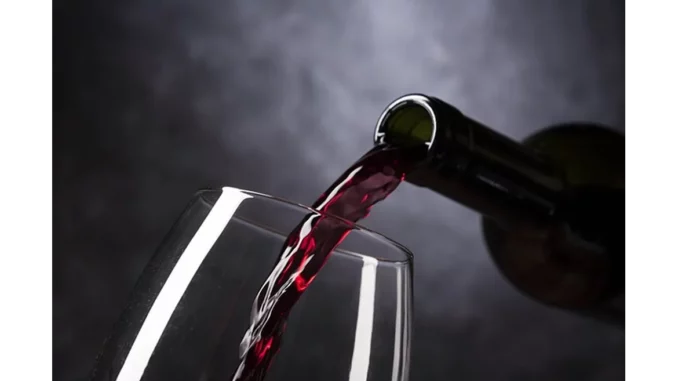
The world of fine wines is a confluence of art, science, and passion. Recently, I had the pleasure of sitting down with Eleanor Chambers, a seasoned sommelier and wine collector, to delve into the intricacies of wine aging, particularly the importance of proper storage conditions. Eleanor’s insights are not just enlightening but also incredibly practical for anyone keen on exploring the world of fine wines. Here’s a recount of our conversation, which I believe will be immensely beneficial for any wine enthusiast.
Eleanor Chambers has been in the wine industry for over two decades. Her expertise has taken her from the vineyards of Bordeaux to the sun-drenched valleys of Napa, and she has amassed a wealth of knowledge on the subject. “Correct aging of excellent wines depends on certain storage conditions,” she says, and this is where our conversation begins.
The Importance of Temperature
“The first and foremost thing to consider when aging wine is temperature,” Eleanor starts. “Wine should be kept at a steady temperature—ideally between 50 and 55°F or 10 and 13°C.” She explains that fluctuations in temperature can cause the wine to age prematurely or spoil. A consistent temperature ensures that the wine matures gracefully, allowing its flavours and aromas to develop fully.
“Think of it like this,” Eleanor continues, “extreme temperatures act like stressors on the wine. If it’s too warm, the wine ages too quickly, losing its complexity and balance. If it’s too cold, the aging process slows down, and the wine might not reach its full potential.” She likens the ideal storage temperature to a gentle nurturing environment where the wine can evolve naturally.
Humidity Matters
Eleanor is quick to point out that temperature isn’t the only factor in the equation. “Humidity plays a crucial role as well,” she says. “Around 70% humidity is ideal for storing wine.” She explains that proper humidity levels keep the cork moist, preventing it from drying out and letting air into the bottle, which could oxidise the wine and spoil it.
“I’ve seen many a fine bottle ruined because it was stored in a place too dry or too damp,” Eleanor laments. She shares a story of a rare Bordeaux she once owned, which was stored in an environment with low humidity. The cork dried out, and the wine was exposed to air, leading to a disappointing experience when she finally opened it. “It was a lesson learned the hard way,” she admits.
The Right Environment
“Beyond temperature and humidity, the storage environment itself is critical,” Eleanor adds. She advocates for storing wine in a dark place, away from direct sunlight. “UV rays can degrade and prematurely age wine,” she explains. “Sunlight is the enemy of wine preservation.”
Eleanor also mentions the importance of storing wine in a vibration-free environment. “Constant movement or vibrations can disturb the sediment in the bottle, affecting the wine’s clarity and taste,” she says. “A quiet, stable environment is best.”
To illustrate her point, Eleanor recounts visiting a friend’s makeshift wine cellar located next to a busy street. “Every time a truck rumbled by, the bottles would shake slightly. Over time, this constant agitation impacted the wine’s quality,” she recalls. “It was a real eye-opener.”
Investing in Proper Storage
Given these specific requirements, Eleanor underscores the value of investing in proper wine storage solutions. “A wine refrigerator or a dedicated wine cellar can be a game-changer,” she asserts. These specialised storage options maintain the ideal conditions consistently, safeguarding your wine investment.
“Not everyone has the space or resources for a full-scale wine cellar,” Eleanor acknowledges, “but even a small wine fridge can make a significant difference.” She adds that for serious collectors or those with valuable bottles, the investment in proper storage is well worth it. “It ensures that your wine will be in the best possible condition when you’re ready to enjoy it.”
Knowing When to Drink
Eleanor emphasises that understanding the aging potential of different wines is crucial. “Some wines are meant to be enjoyed young, while others benefit from years of aging,” she says. Researching the particular vintage and producer can provide valuable insights into the optimal drinking window.
“Monitoring your collection and consulting experts can help you determine when a wine is at its peak,” Eleanor advises. She shares a personal anecdote about a bottle of Barolo she had been saving. “I waited for a decade to open that bottle, and it was worth every moment of the wait. The flavours were incredibly complex, and the experience was unforgettable.”
Conclusion
Eleanor’s insights into the correct aging of fine wines highlight the importance of meticulous storage conditions. From maintaining a steady temperature and proper humidity to ensuring a dark, vibration-free environment, every detail matters in the journey of a wine from vineyard to glass.
“Wine is a living thing,” Eleanor concludes, “and treating it with the respect it deserves will reward you with an exceptional experience.” Her advice is not just for the seasoned collector but for anyone who values the art and science of fine wines.
Whether you are a casual drinker or an aspiring connoisseur, understanding these essential facts about wine aging can elevate your appreciation and enjoyment of fine wines. So, next time you uncork a bottle, remember Eleanor’s wisdom and savour the journey that brought that wine to your glass.
Kenneth George


Be the first to comment